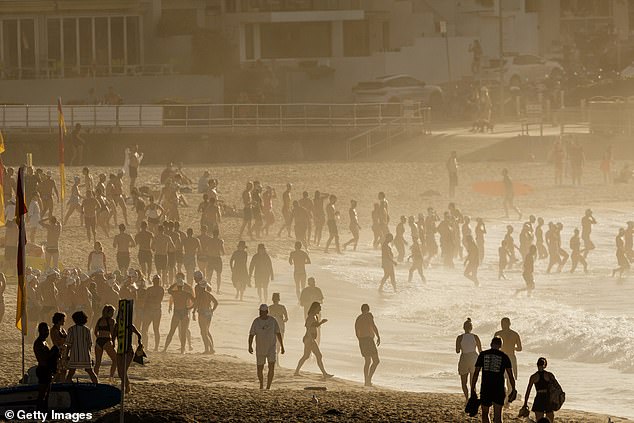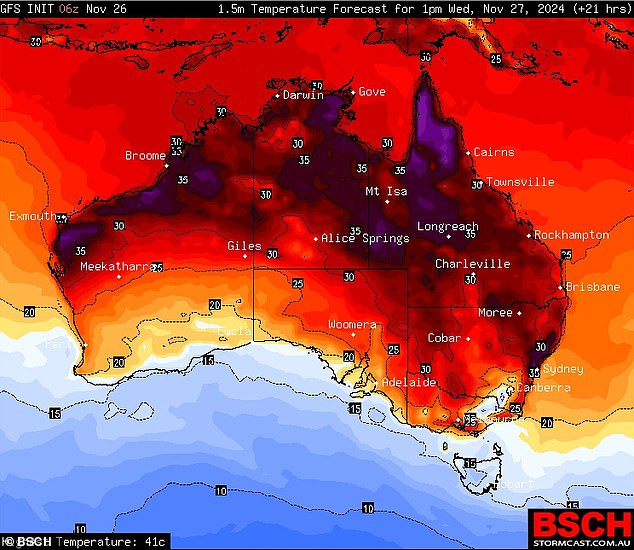New South Wales Premier Chris Minns has asked Sydneysiders to turn off their appliances to ration electricity as the threat of heatwave blackouts looms over the state.
Minns warned Australians to delay using their dishwashers, pool pumps and washing machines between 3pm and 8pm on Wednesday as the heatwave approaches its peak.
The five-hour ‘low energy window’ also includes the closing of blinds, windows and doors as the NSW government attempts to reduce energy use over the next 12 hours.
“Solar production in the energy market starts to decline at 3pm, exactly when people start to return home,” Mr Minns said.
“So if (you couldn’t use) your pool filter, your dishwasher or your washing machine, between 3:00 p.m. and 8:00 p.m., you would be helping the grid.”
Minns said he had been notified by the Australian Energy Market Operator (AEMO) that “there are not sufficient reserves in terms of all-day generation” and that had prompted his warning.
He said for those who turned on appliances, electricity costs would be “through the roof” as coal-fired power stations in Queensland, New South Wales and Victoria remained offline.
Australia’s energy regulator is warning of the possibility of blackouts as sweltering East Coast residents turn on their air conditioners to beat the heat.
The Australian Energy Market Operator (AEMO) has issued its most severe “lack of reserve” warning, predicting an electricity shortfall on the New South Wales east coast. Residents on the east coast of New South Wales are turning to their air conditioners to combat the heatwave.
The energy regulator is struggling to shore up electricity supplies after issuing a blackout warning as the east coast is hit by a late spring heatwave.
The Australian Energy Market Operator (AEMO) has issued its most severe “lack of reserve” warning, forecasting an electricity shortfall in New South Wales between 3.30pm and 5pm on Wednesday.
That coincides with the peak of the state’s heatwave and predicted highs of nearly 40C across much of Sydney’s western suburbs, prompting people to turn on their air conditioners when they return home in the afternoon.
The statement urges the industry to generate as much power as possible and restore all available power lines on the grid to meet growing demand.
“AEMO is working with the industry to manage electricity reliability during high demand and heatwave conditions in New South Wales, with major power stations unavailable due to forced and planned outages,” a spokesperson for the operator said.
“In addition, AEMO is looking to acquire additional reserves… to better manage the forecast low electricity supply this afternoon and early evening.”
The Bureau of Meteorology has issued severe heatwave warnings for large stretches of the New South Wales coast, including the Sydney metropolitan area, the Hunter region and the South Coast.

The energy warning coincides with the peak of the state’s heatwave, with temperatures approaching 40C across much of Sydney’s western suburbs.
Warnings also remain in place for parts of the ACT and Queensland, including an extreme heatwave in Australia’s far north.
Federal Energy Minister Chris Bowen insisted there was enough electricity in reserve to see us through Wednesday, adding the system was working as planned.
He noted that five coal plant units were out of service and that only three of those outages were expected.
“The loss of reserves warnings are not a blackout… they are an indication that AEMO is putting more electricity into the system, which is working,” he said.
“Obviously, AEMO is always on the lookout for unexpected events that they need to prepare for and have put all necessary protections in place at this time.”
Sydney city center is forecast to hit 34C on Wednesday, but the western suburbs will fare worse, with 39C predicted in Richmond and Penrith and a high of 38C in Parramatta.
Forecasts for western Sydney are more than 10C above average November highs, Met Office senior meteorologist Miriam Bradbury said.
“Although abnormally high, these temperatures are not expected to break any records (but) what is most significant is the duration of the warm conditions, including those warm nights,” he said.
“It’s also worth noting that ‘sensible’ temperatures will be oppressive due to high humidity levels.”
Rain is expected to hit eastern New South Wales on Thursday, although hot and humid conditions will persist.


